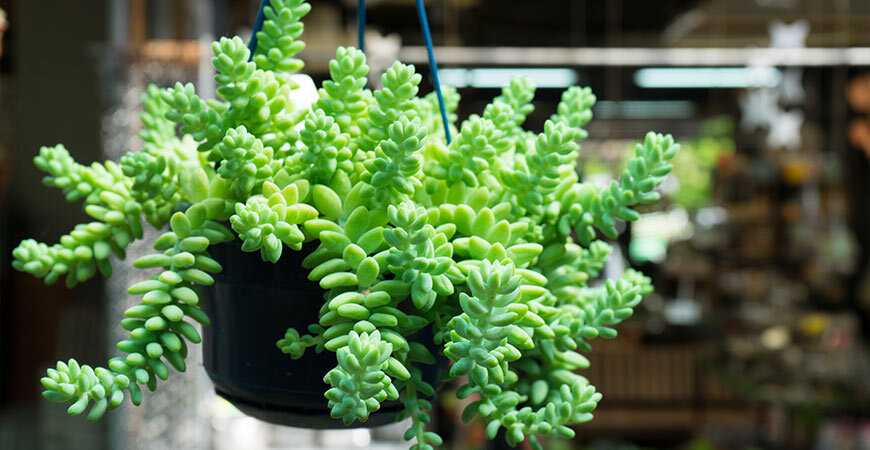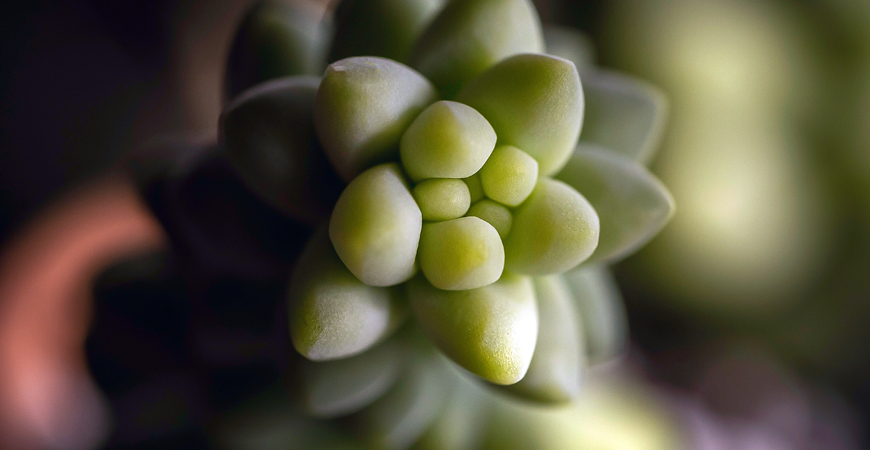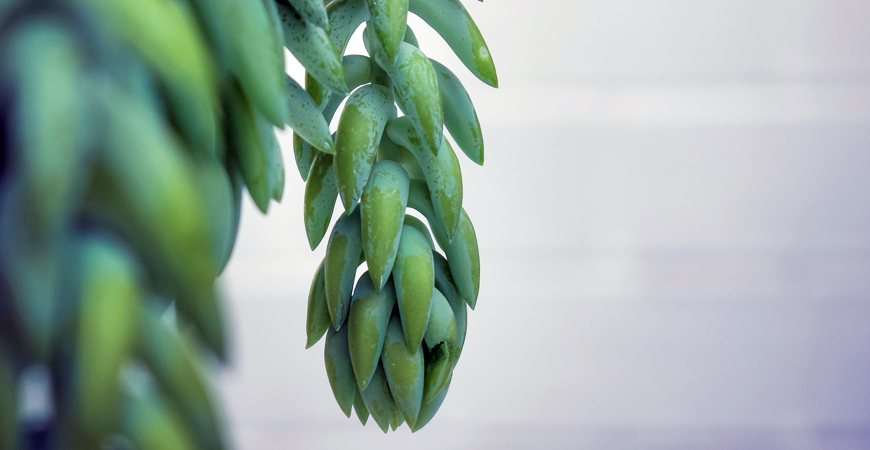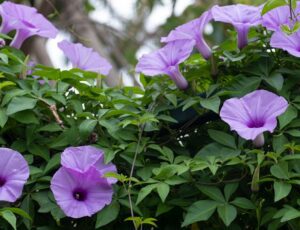
How to Grow Burro’s Tail Succulent
Burro’s tail (sedum morganianum) is an ornamental succulent prized for its plump, grey-green foliage and silvery sheen. They are usually grown as a houseplant and are native to Mexico and Honduras. See our tips and how-to guide for growing burro’s tail succulent.
Burro’s Tail Care
Burro’s tail features trailing foliage that grows upward when young, then will drape gracefully over the sides of a container. The plump, water-filled leaves are heavy and look similar to the tail of a burro or donkey.
Soil Requirements
Use a quality cactus mix or a blend of two parts sand to 1 part standard soil mix. The sand will provide proper drainage.
Moisture Needs
Water burro’s tail every 2 to 3 weeks. Let the soil dry between watering, check for dryness with a finger. Your plant should be watered the most during the active growing period – March to October. November to February is a rest period, so water burro’s tail once a month or less. Overwatering the plant may cause leaf drop.
Fertilization
Like most succulents, burro’s tail requires little fertilizer to thrive. Fertilize the plant with a balanced liquid fertilizer mixed with water diluted to one-quarter concentration. Check the fertilizer label for directions. Do not fertilize your plant from November to February (the dormant period).
Pests and Disease
Overwatering is the usual cause of succulent diseases. Too much moisture can cause root rot. Burro’s tail does not like wet feet!
Burro’s tail is bothered by minimal pests. Mealybugs or aphids can be removed with a spray of water from the sink. Furthermore, do not jostle or bump the plant, as the leaves will easily detach. If you notice dropped leaves, propagate them in the rooting medium to create new plants.
Sun Requirements
This type of plant requires a minimum of 4 hours of bright, indirect light per day. For even growth, turn the plant pot frequently so the light will touch all sides of the plant.
Indoor Temperature Requirements
Like most succulents, burro’s tail thrives in a warm, low-humidity environment of most homes. This makes it an excellent, easy-care houseplant.
What type of container should I use to grow burro’s tail?
Because of the plant’s long trailing stems, burro’s tail looks best when grown in a hanging container or a pot that will allow the pendulous stems to drape over the sides. A hanging basket, urn, or a large pot displayed on a pedestal, are good choices.
Does burro’s tail bloom?
Yes. They bloom in late spring or early summer. Showy, cup-shaped flowers appear at stem ends in pink, red, purple, or yellow-orange shades.
How to Propagate Burro’s Tail
Burro’s tail may be propagated by leaf or stem cuttings. Due to the plant’s ample water storage system, it’s one of the easiest succulents to propagate.
Propagating from leaf cuttings
Pick a few leaves from the plant or gather dropped leaves. Place them partway in the rooting medium. Tiny roots will sprout from each leaf.
To make stem cuttings –
- Clip a stem
- Strip the leaves from the trimmed end
- Allow the stem to dry for a day or two
- Push the cut end into a rooting medium
Secure heavy stems with metal pins. It can take several months for new plants to grow roots. Keep the soil slightly moist until the cuttings grow roots. Share your starter plants with family and friends.
Companion plants for burro’s tail succulent
Companion planting involves the selection and grouping of plants based on:
- Similar growth requirements
- A pleasing appearance
- The ability to protect its plant neighbor from pests
Good companion plants for burro’s tail include ice plant, paddle plant, and similar succulents that require minimal moisture. It is considered a “spiller” plant, so place a medium to tall plant next to it to create visual contrast.
Did you know? Burro’s tail succulent is also called donkey’s tail, horse’s tail, monkey’s tail, and lamb’s tail.












